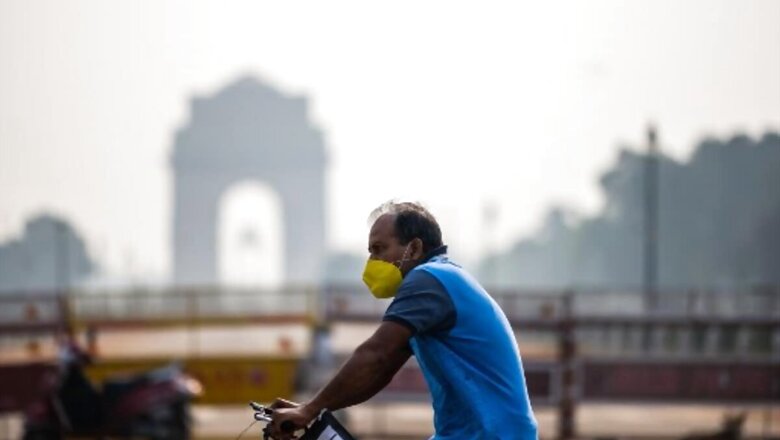
views
For this first time since the coronavirus-induced lockdown, Delhi-NCR’s air quality turned ‘very poor’ on Tuesday and several monitoring stations in the Capital recorded PM 2.5 levels five times above the prescribed daily standards and PM 10 levels more than twice the prescribed daily standards.
The pollution in the region spiked contrary to expectations of improvement, owing to the deep depression weather system that crossed over the coast of Andhra Pradesh on Monday. The weather system was expected to influence winds and help dispersal of pollutants but that did not happen. On the contrary, a strong surface level inversion that traps pollutants closer to the ground and sudden calmness in surface winds led to the accumulation of pollutants in Delhi, according to SAFAR (System of Air Quality and Weather Forecasting and Research).
In Delhi, monitoring stations installed at Shadipur, Rohini, ITO, Punjabi Bagh, Mathura Road, Nehru Nagar, Pusa, Dwarka Sector 8, Patparganj, Ashok Vihar, Sonia Vihar, Jahagirpuri, Vivek Vihar, Narela, Bawana and Mundka recorded ‘very poor’ air quality.
Government scientists who issue air quality forecasts and analyse day-to-day trends said the farm fires in the neighbouring states accounted for less than 10% of the pollution seen in the capital as of now. The scientists said pollutants from sources such as dust, garbage burning, vehicles and local industries were getting trapped and slow wind speed was unfavourable for dispersal of these pollutants.
“Farm fires across Punjab, Haryana and Uttar Pradesh are contributing very less to Delhi pollution as of now. We run two models of the pollution load in North India, one that is fed data of farm fires along with local pollution and another model that reflects the pollution load without farm fires data. This showed that the share of local sources was dominant as of now,” said Sachin Ghude, a scientist at the Pune-based Indian Institute of Tropical Meteorology.
Ghude said the share of pollution from farm fires is likely to increase soon as the peak period of burning paddy straw prior to wheat sowing is around the corner.
According to SAFAR, there were over 600 fires observed in Punjab and Haryana on October 12. “The wind direction is not favourable for transport of pollutants and hence only marginal contribution of stubble fires in PM 2.5 pollution is expected,” it said.
The air quality forecast issued on Tuesday said the air quality index is likely to be in very poor to poor category for the next two days. However, there are chances that winds may pick up speed and if that happens, the air quality may improve to poor or moderate category.
Read all the Latest News and Breaking News here



















Comments
0 comment